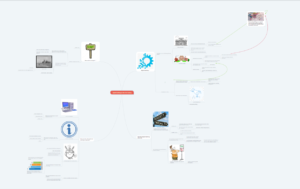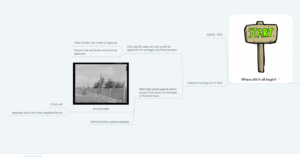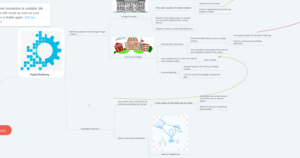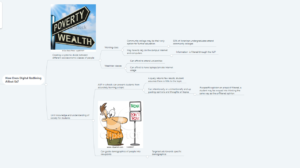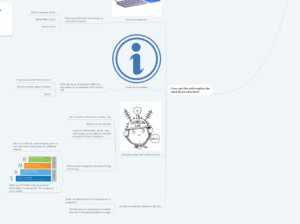For this reflection, I decided to read the article “Digital Redlining, Access, and Privacy” by Chris Gilliard. In this article, the concept of digital redlining is discussed. This is the concept that many students do not have the same access to information as others. Some may simply not have access to personal devices (computers, phones, tablets) at their homes. Others may only have access to these devices in public settings like libraries or schools. This introduces the concept of digital redlining. By having to use public resources, students may encounter acceptable use policies (AUPs). These policies can restrict and filter the information that a student can see and access on the Internet. Students may not even realize that there is any information on a topic due to this. This can create a divide of available information between students of a lower socioeconomic class who may not have access to an unrestricted Internet experience and those of a higher stratus who may have a larger access.
Before reading this article and exploring the issue, I hadn’t considered the concept of redlining. For most of my life, I had access to a personal computer outside of a controlled environment. As such, the concept of digital redlining hadn’t occurred to me. However, reading the article made reflect on my grade 9 year. After moving to a rural home in a new city, we were without Internet for the entire year. As such, access to news, social media, and online entertainment was barred to me. Being the late 2000s, phones with a data plan were still a rarity. As such, when assigned research projects for my classes, I had to make due with using the school computers at lunch. This limited the amount of time I was able to research. After reading this article, I find myself wondering if it also limited the information that I found on the topics. It’s possible that information sources were filtered from the results. The difference between my experience with research projects in grade 9 and subsequent years is vast. Once I had access to digital resources outside of the school again, I had far more flexibility in when I could research. I was also able to research anything I wanted at my leisure. Finally, I was able to participate in peer-peer networking again, something prohibited by my school’s AUP. If I were to have been so restricted for my entire adolescence, I can see how my way of thinking could have changed.
Going forward, I have a new appreciation for taking into consideration different student’s access to information. I will now know to critically examine my school’s AUP and to try and facilitate an equitable classroom with it in mind. Knowing that students have different access to technology, I will provide extra, external resources where necessary to help make up for a student’s lack of access.
For this reflection, I created a mind map using mindmeister. Creating a mind map proved to be a challenge. Sorting through the concepts posited by Gilliard and sorting them into a mind map proved to be quite challenging. The medium itself was fairly easy to use. Creating the branches and subbranches was easy and fairly effortless. However, the options for design were extremely limited, allowing for little creativity in that regard. Also, at the time of posting, I realized that to save the image, you had to buy the premium version. As such, I had to take screenshots of each branch and hope that that is sufficient. However, please see below for a link to the online version.
